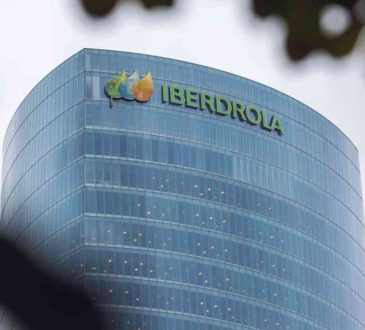How to Do a Strategic Pivot to Address COVID

“It’s not going away, and we have to face that reality.” That’s what the CEO and founder of a high-tech manufacturing startup with 180 employees told the leadership team in early July to convince them of the need to do a strategic pivot to address COVID.
Previously, the startup’s executives took things one step at a time, putting out the various COVID-related fires that flared up more and more often: supply chain disruptions; cancelled orders; employees having difficulties with work-from-home setups or needing flex time to manage kids or elderly relatives.
Seeing more of the broad picture, the CEO realized the company was going in the wrong direction. One of the members of the Board recommended my recently-published book on strategic pivoting to adapt to COVID and plan for the post-pandemic recovery.
After a quick read, the CEO convinced the other leadership team members that the company needed to do a strategic pivot to address COVID. He then had his executive assistant contact me and arrange for a facilitated strategic retreat dedicated to addressing COVID, which became my sixth of nine such engagements thus far. This article summarizes my experiences helping a range of companies – five startups, three established middle-market ones, and a business unit of a Fortune 300 company – pivot for our new abnormal reality.
Challenging Business Model Assumptions
Invariably, the first step involved reassessing assumptions about the organization’s business model. That meant an initial couple of brief meetings with the leadership team where we discussed the kind of fires they faced recently.
For example, the manufacturing startup faced a new challenge in selling its high-tech products. Known for their high quality, the products were flying off the shelf previously; the company had trouble keeping up with demand.
Now, the startup’s salespeople reported that the decision-making process changed. Accounting put much more pressure on operations managers to prove that the quality of the products brought sufficient ROI. Couldn’t they get by with lower-cost options?
While the manufacturing startup invested into innovation to ensure the quality of its high-tech products, it didn’t have a clear measurement of ROI for the innovation. After all, operations people focused on quality, not ROI. As a result, some of its customers, with apologies, chose to buy lower-cost alternatives.
Other companies faced a range of similar problems, in sales and other areas. Often, the news came as a surprise to other members of the leadership team, even the CEO; all were busy fighting fires in their own areas.
Gathering Internal Information
With more awareness of the business model assumptions challenged by the pandemic, the next step involved gathering internal information for a revised strategy and business model.
Each of the top leaders who led a department and would be present at the strategic retreat gathered feedback from their direct reports on how to revise each department’s goals, structure, and relationship to customers (external or internal) in light of the challenged assumptions in either of three scenarios.
- In the first scenario, a vaccine with over 90% effectiveness would be found by Spring of 2021, and the pandemic mostly over by Spring of 2022
- In the second, this vaccine would be found by Spring of 2022, and the pandemic mostly over by Spring of 2023
- In the third, we would never find a vaccine more effective than 50%, just like we haven’t found a vaccine more effective than that for the flu
Strategy Day
Next, go on to the strategic retreat, which should be a two-day event, with one day for broad strategy and another for operationalizing the strategy.
The high-tech manufacturing startup’s team had to struggle extensively with accepting the reality of changing marketplace demands. Its operations team established a sense of identity and team spirit around innovation as a core value; its marketing and sales made innovation a fundamental element of their pitches. They kept veering away from the reality of the need to shift from innovation to ROI measurement.
The CEO and I kept steering them back. I had to use the full range of my facilitation skills to keep the conversation on the right track, an especially challenging task since this was a virtual retreat.
The leadership team of a late-stage SaaS startup with over 500 employees was surprised that the large majority of their direct reports reported feelings of work-from-home burnout and “Zoom fatigue” among employees as one of the most serious problems. In this area, as an expert in emotional and social intelligence, I could provide substantial support.
It’s key to realize that the issues stemmed not simply from burnout, but from much more. These include dealing with:
- Pandemic-related mental health challenges such as anxiety/depression/trauma/grief
- COVID-related pragmatic challenges, such as kids staying home
- Social isolation from friends, family, and community events, as well as our previous outside hobbies and entertainment
- Poor work-from-home environments with inadequate home office setups
- Lack of skills in effective virtual communication and collaboration
- Being deprived of the fulfillment of those basic human needs – sense of connection, tribe, meaning and purpose – that we naturally get from wor
Even worse, the vast majority of us don’t realize we aren’t simply experiencing work-from-home burnout, and don’t recognize what we’re missing. To address this requires not simply financial support for home office setups or flex time to address pragmatic pandemic challenges. It also requires professional development in effective virtual communication and teamwork. Moreover, it requires professional development in emotional and social intelligence, to enable employees to recognize and address the emotional and social gaps left by the pandemic.
Operations Day
The next day should be focused on operationalizing the strategic changes in the business model. You need to address potential threats and opportunities in a variety of future scenarios, and revise the previous day’s strategy if needed. These scenarios need to include at least the three different COVID futures described above, and several different potential economic recovery scenarios (K, U, W, V, L).
An enterprise data analytics startup with over 120 staff recognized an unexpected opportunity. It had long been trying to get some lucrative client accounts held by several competitors. The startup’s CEO knew that most of the competitors’ leaders had a dismissive attitude toward COVID.
The startup decided to adjust its marketing and sales to demonstrate the steps it took to be pandemic proof. It would then have its salespeople call on the competitors’ client accounts and tell them about these steps. Then, it would offer to provide support if the pandemic lasted longer than the most optimistic predictions and the competitors couldn’t uphold their previous high standards.
Next Steps and Follow-Up
At the conclusion of the operations day, determine specific next steps for each new initiative that you discussed. Decide on approximate resources required and metrics of success. Choose one member of the leadership team accountable for implementing the initiative, with others potentially involved in the effort. Finally, prepare a report for the Board of Directors on the retreat, highlighting how the strategic pivot will help the company adapt to various scenarios of COVID and the economic recovery.
Follow up on all the next steps in the weekly leadership team meeting or whatever other leadership team forum your company already uses. Then, in a month, have a half-day event where you assess the strategy shift and make any corrections to strategy and/or implementation as needed. Do the same in three months.
Here are the key take-aways: remember, the first step, always, is challenging assumptions. Second, gather internal information; don’t skip this step, assuming your leadership team knows what’s truly going on. Third, spend at least a day on revising your external and internal strategy. Fourth, operationalize your strategy, addressing threats and seizing opportunities in a variety of potential future scenarios. Fifth, commit to next steps, determining resources required, metrics of success, and who will be responsible for implementing each step, with a report to the Board on the event. Sixth, follow up regularly on all steps once a week, with a one-month and three-month half-day follow-ups revising both strategy and implementation as needed.
While nothing can guarantee success, I can guarantee that taking these steps will maximize your chances of not only surviving but thriving in these troubled times.
Written by Dr. Gleb Tsipursky.
World’s Best Countries – Cultural Heritage Influence.
World’s Best Countries – Retirement.
World’s Most Forward-Thinking Countries.
Add CEOWORLD magazine to your Google News feed.
Follow CEOWORLD magazine headlines on: Google News, LinkedIn, Twitter, and Facebook.
This report/news/ranking/statistics has been prepared only for general guidance on matters of interest and does not constitute professional advice. You should not act upon the information contained in this publication without obtaining specific professional advice. No representation or warranty (express or implied) is given as to the accuracy or completeness of the information contained in this publication, and, to the extent permitted by law, CEOWORLD magazine does not accept or assume any liability, responsibility or duty of care for any consequences of you or anyone else acting, or refraining to act, in reliance on the information contained in this publication or for any decision based on it.
Copyright 2024 The CEOWORLD magazine. All rights reserved. This material (and any extract from it) must not be copied, redistributed or placed on any website, without CEOWORLD magazine' prior written consent. For media queries, please contact: info@ceoworld.biz
SUBSCRIBE NEWSLETTER








